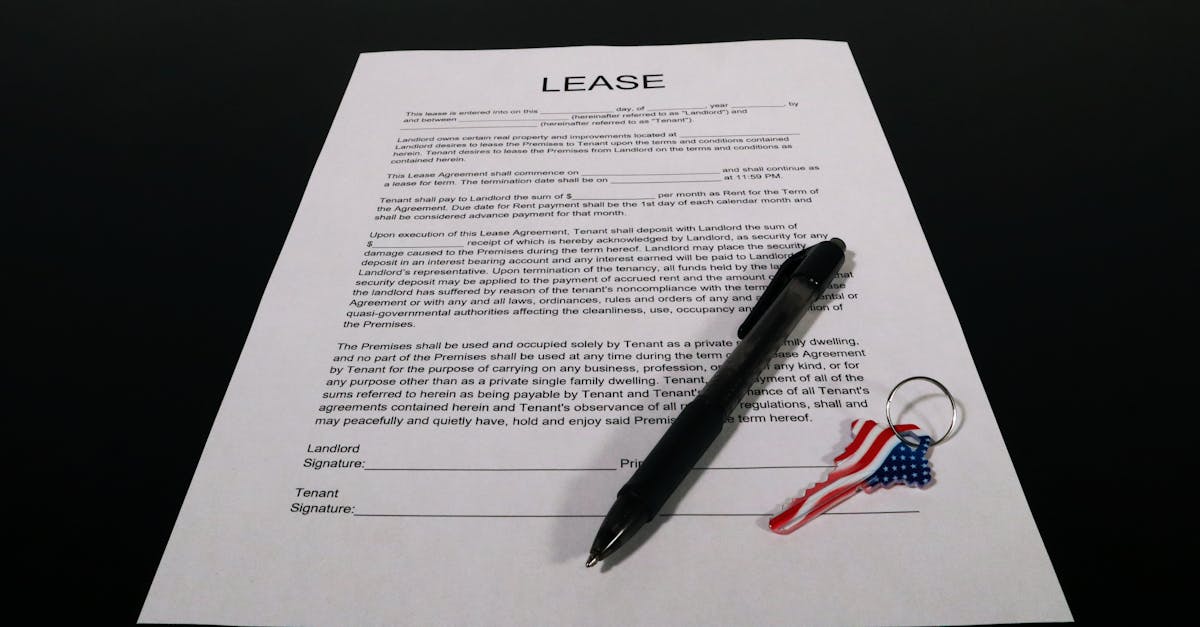
Hybrid and Remote Lease Workflow Management: Automating Real Estate Agreements Online
Introduction
Managing leases from anywhere has become the new norm. As real estate organizations adapt to remote and hybrid operations, the once paper-heavy world of lease agreements faces mounting pressure to streamline, digitize, and standardize. Manual workflows no longer suffice when teams must collaborate across cities, states, or even countries. Lost paperwork, compliance headaches, and endless email chains can stall deals and put your business at risk.
That’s where document automation steps in. By centralizing and automating online lease workflows, businesses can close agreements faster, cut down on costly errors, and ensure everyone stays on the same page—no matter where they’re working from. In this article, we’ll explore why distributed teams need digital-first lease processes, outline the challenges of remote compliance, and highlight actionable steps to build a secure, efficient workflow for today’s real estate professionals.
The shift to remote and hybrid management of real estate workflows
Over the past several years, real estate teams have rapidly shifted to hybrid and remote workflow models, with many adopting distributed workflow structures to manage leases, compliance, and property operations from anywhere. The need for seamless virtual workflow management has driven companies to rethink traditional, paper-heavy lease processes in favor of efficient, digital-first solutions.
- Virtual team productivity solutions now enable property managers, brokers, and legal teams to collaborate, sign, and execute documents without being physically present.
- Remote work processes have made real-time updates and approvals possible, creating greater agility and transparency.
Challenges in distributed lease processing and compliance
Managing leases across locations presents unique challenges. Distributed workflows can lead to lost or inconsistent documentation if there’s no standardized system. Remote workflow management also demands clear oversight to ensure regulatory compliance and minimize errors.
- Collaboration barriers: Virtual teams may struggle keeping up with changes or approvals in real time.
- Compliance risks: Without centralized tracking, it’s easy to miss key compliance steps or deadlines.
- Workflow automation for remote teams is essential; manual processes simply can’t keep pace with remote work expectations.
Using document automation to standardize lease agreements
Document automation helps standardize the remote workflow process by ensuring every lease follows a consistent, approved template. Automated lease workflows reduce manual entry errors, speed up turnaround, and maintain an audit trail for every document interaction. This is critical for remote onboarding workflow, especially for new team members or rapidly growing offices.
Benefits include:
- Reduced risk of using an outdated agreement
- Streamlined negotiation and approval processes
- Automated reminders and e-signature collection
Best-in-class Formtify templates for lease automation
Using proven templates can dramatically improve the efficiency and consistency of your remote lease process. Formtify offers specialized templates for different states and property types, designed for workflow automation for remote teams:
- Commercial Lease Agreement – Texas
- Residential Lease Agreement (Fixed Term) – New York
- Room Rental Agreement – California
These templates ensure your distributed workflow remains compliant and efficient, no matter your team’s location.
Workflow examples for virtual property management
Remote team workflow is best supported by clear, repeatable processes. Here are some practical examples of remote workflow automation in property management:
- Remote onboarding workflow: Automate new tenant onboarding with e-signature links and digital move-in checklists.
- Lease renewal: Trigger automated reminders and renewal forms when leases approach expiration.
- Agile workflows for distributed teams: Use task management and document approval systems to quickly assign, review, and approve lease changes or amendments.
Maintaining security and compliance with digital processes
Security and legal compliance are central to hybrid workflow management. Remote workflow tools now offer features like access control, document encryption, and comprehensive audit trails to protect sensitive lease information.
- Remote workflow software should include role-based permissions, ensuring only authorized staff access or modify key documents.
- Digital signatures and encrypted storage help uphold legal standards and minimize risk in a virtual workflow environment.
Implementing automated lease workflows for remote teams
When rolling out remote workflow automation, start with the highest volume or most error-prone processes. Involve stakeholders from HR, legal, and compliance teams early to ensure a smooth transition to an automated workflow process.
- Choose remote workflow management solutions that integrate with your existing tools and support granular access controls.
- Train your remote teams on workflow changes, emphasizing the benefits for virtual team productivity and compliance.
- Monitor and refine your system regularly based on team feedback and compliance requirements.
Summary
As more real estate teams embrace distributed and hybrid work, streamlined lease management has never been more critical. By adopting document automation and standardized digital workflows, HR, legal, and compliance professionals can prevent paperwork delays, reduce compliance risks, and ensure everyone stays informed—no matter where they are. Document automation not only standardizes processes but increases accuracy and accelerates turnaround times for lease agreements. Ready to modernize your workflow? Explore Formtify to find tailored templates and tools that support secure, smart real estate operations.
FAQs
What is a remote workflow?
A remote workflow refers to a set of processes and tasks that are managed and completed outside of a traditional, in-person office environment. These workflows use digital tools and platforms, allowing teams to collaborate, review, approve, and track work from virtually anywhere.
How do you manage workflow remotely?
Managing workflow remotely involves using cloud-based systems, task management tools, and automated document processes to keep teams aligned. Communication and tracking tools help ensure everyone has access to the latest updates while maintaining clear oversight of progress and compliance.
What tools help with remote workflow management?
Popular tools for remote workflow management include document automation platforms, e-signature solutions, project trackers, and cloud storage services. These platforms help streamline document sharing, approvals, and secure collaboration for distributed teams.
What are the main challenges in remote workflow?
The main challenges include keeping documentation consistent, maintaining compliance, and ensuring clear communication across locations. Without automation and centralization, it’s easy for important steps or deadlines to be missed, putting deals and compliance at risk.
Why is workflow automation important for remote teams?
Workflow automation is crucial for remote teams because it reduces manual errors, speeds up approvals, and supports consistent compliance, all without requiring physical paperwork. Automated processes also make onboarding and collaboration much more efficient for teams working across different cities or countries.





